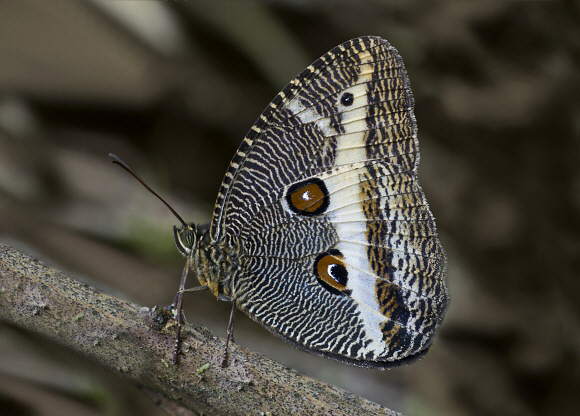 Dasyophthalma rusina, Itatiaia, 1200m, Brazil – Christian Meyn
Dasyophthalma rusina, Itatiaia, 1200m, Brazil – Christian Meyn
Introduction
A few decades ago the Owl butterflies and their close relatives were considered to be members of a now defunct family – the Brassolidae. Following revisions by Erlich, Ackery and Wahlberg all of the Brassolidae were reclassified as members of the Nymphalid subfamily Morphinae.
The Morphinae includes about 140 species in the neotropics. Its members include the dazzling blue Morpho species which are placed in the tribe Morphini, and the 93 members of the Brassolini tribe. The latter includes the genera Blepolenis, Brassolis, Caligo, Caligopsis, Catoblepia, Dasyopthalma, Dynastor, Mielkella, Eryphanis, Mimoblepia, Orobrassolis, Opsiphanes, Opoptera, Selenophanes and Penetes. The Brassolini are all crepuscular or nocturnal in behaviour although some species can also occasionally be seen flying by day in dark forest.
There are 4 known Dasyophthalma species – creusa, geraensis, rusina and vertebralis.
Dasyophthalma rusina occurs only in south eastern Brazil.
Habitats
This species inhabits rainforest and cloudforest at altitudes between about 200-1200m in the Atlantic forests of south eastern Brazil.
Lifecycle
To be completed.
Adult behaviour
To be completed.
